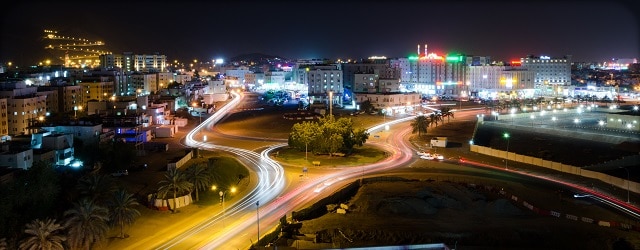A sluggish economy, high debt burden and tensions among its neighbors challenge the new leader’s ambitious development plans.

For decades, the strategically located sultanate of Oman has pursued a policy of neutrality, maintaining political independence even as tensions escalated between its neighbors Iran and Saudi Arabia.
But the death in January of the widely respected Sultan Qaboos bin Said, and a looming economic crisis, will soon test the resolve of his successor, Haitham bin Tariq Al Said, to hold a neutral course. Haitham, the former culture minister, had served as head of the committee for Oman’s ‘Vision 2040’ reform plans since December 2013.
Sultan Qaboos pulled his country from relative obscurity to a position as a regional power broker during his five-decade-long reign. Cracks emerged more recently, as a sluggish economy fuels unease and a high debt burden complicates efforts to address these problems. Diversification is a primary goal of Vision 2040.
Haitham is known for his business credentials, stoking hopes he will deregulate an economy saddled with debt that equaled 60% of GDP last year, according to London-based Capital Economics. A government pledge to introduce a 5% value-added tax next year is an early indicator of the new government’s seriousness.
But economic growth will expand a mere 0.5% this year and 0.8% in 2021, Capital Economics predicts. Its forecasts lie well below consensus estimates, which anticipate growth of closer to 2.5%-3.0%. Oil revenue is the easiest way to raise those numbers, reducing the debt as a result. According to Moody’s Investors Service, Oman requires oil prices of more than $90 a barrel to balance its budget.
Haitham wields an extraordinary level of control as head of state, prime minister, finance minister, foreign minister and defense minister, fueling speculation he may relinquish some powers in favor of technocrats or royal family members. But the economy is expected to come under further pressure from the recent outbreak of the coronavirus, as tourism and air travel dip. In March, Moody’s downgraded the state’s long-term issuer and senior unsecured ratings to Ba2 from Ba1, simultaneously changing its outlook to stable.
Balancing Act
The sultanate’s fiscal position is also putting pressure on its long-standing dollar peg. Foreign exchange reserves and sovereign wealth fund assets combined equate to around 50% of GDP, lower than in any other Persian Gulf state except Bahrain. Haitham could turn to his neighbors for a bailout if the balance sheet continues to deteriorate; but that would come at a high political price, possibly including a shift in Oman’s relationship with Iran, the regional nemesis of Saudi Arabia and the United Arab Emirates.
It’s unlikely the sultanate will jettison its long-standing policy of neutrality, however, says Kristian Coates Ulrichsen, fellow for the Middle East at Rice University’s Baker Institute for Public Policy. “Oman may come under pressure from the UAE to tie economic and investment support to a rebalancing of regional relationships,” he says. “That will not so much involve abandoning Omani neutrality [as] resetting ties with the UAE and Saudi Arabia.”
That said, the six-member Gulf Cooperation Council remains split, with Bahrain, Saudi Arabia and the UAE continuing a standoff with Qatar, which they accuse of supporting terrorism.
Regional and international actors will be closely watching whether Oman can retain its role as a facilitator between Saudi Arabia and the US on one side and Tehran on the other, while embarking on a path of rapid economic diversification. Investors may be encouraged by recent initiatives including Muscat Airport City, a new development including a free-trade zone, a retail zone and a logistics hub, which Oman Aviation Group projects will attract over $1.5 billion of investment in the next 20 years.
In December 2019, Bloomberg reported that the government sold a 49% stake in Oman Electricity Transmission Company to China’s State Grid International Development as part of Beijing’s Belt and Road Initiative. And, earlier in 2019, Malaysia’s state oil company, Petroliam Nasional Berhad, purchased a 10% stake in Block 61 of the Al Khazzan onshore gas field.
With no sign of an early end to Saudi Arabia and Iran’s rivalry , Oman may find that its political and economic futures are not entirely its own to make. Investors, no doubt, will be keeping this well in mind.



